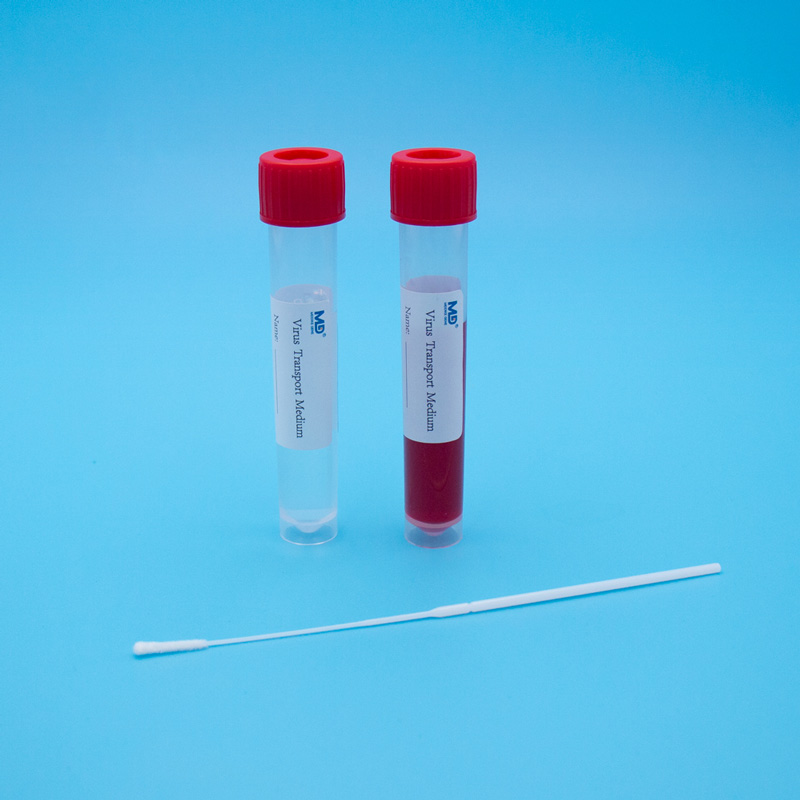The success of the diagnosis of SARS-CoV-2 (2019-nCoV) during the COVID-19 outbreak depends largely on the quality of the specimen and the conditions under which the specimen is transported and stored before being processed in the laboratory.
The RT-qPCR diagnosis of COVID-19 requires nasopharyngeal swab specimens. This sample is then deposited in viral transport medium (VTM). There are two main types of viral transport medium: inactivated and non-inactivated. So how to choose the two transport medium?

Inactivated virus transport medium:
It is mainly a virus lysis type preservation solution improved by nucleic acid extraction lysis solution. The high concentration of guanidine salt in the sample can effectively inactivate the virus, which can effectively prevent the operator from secondary infection, but it also contains Rnase inhibitor, which can protect the viral nucleic acid from being degraded, so that the subsequent detection by NT-PCR can be performed. . Moreover, it can be stored at room temperature for a relatively long time, which saves the cost of virus sample storage and transportation.
Non-inactivated virus transport medium:
It is mainly a virus maintenance liquid type preservation solution improved on the basis of the transport medium. It can preserve the activity of the virus in vitro and the integrity of antigens and nucleic acids, protect the viral protein coat from being easily decomposed, and maintain the originality of the virus sample to a large extent. In addition to nucleic acid extraction and detection, this preservation solution can also be used for virus culture, isolation, and antigen detection, etc., but long-term storage after sampling requires strict low temperature.
Regardless of whether it is an inactivated type or a non-inactivated type, the virus sampling tube before sampling must be strictly inactivated and sterilized to ensure that there are no other microorganisms in the tube, which may cause the virus to decompose or other influences after sampling and cause false detection. After swab sampling, if a collection tool or preservation solution of poor quality is used, it will affect the subsequent test results and even cause misdiagnosis. Therefore, you must choose a virus sampling tube produced by a professionally qualified manufacturer.
After sampling, you need to pay attention to:
1. It is forbidden to directly contact the preservation solution that has placed the virus sample
2. It is forbidden to infiltrate the swab with the preservation solution before sampling
3. The virus sampling tube is a one-time product, which is only used for the sampling, transportation, and preservation of clinical virus samples, and should not be used beyond the intended use.
4. Before using the product, pay attention to the shelf life and whether the packaging is in good condition.
5. When collecting virus samples, professionals should strictly follow the sampling procedures; when samples are tested, they should be operated in a laboratory that meets the safety level.
6. Be sure to mark the sampling information clearly after sampling.
7. Pay attention to the preservation and transportation of specimens.

















